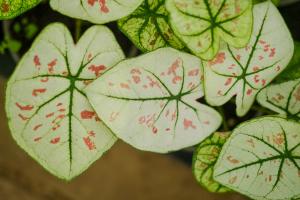Where to Plant Trees in the Philippines: A Guide to Optimizing Tree Planting Efforts
The Philippines is an archipelago blessed with a diverse range of flora and fauna. However, rampant deforestation, land conversion, and climate change have resulted in massive biodiversity loss, soil erosion, and frequent natural disasters. In response to these threats, various organizations and individuals have launched efforts to plant trees to restore degraded ecosystems and mitigate climate change impacts. But where should we plant trees in the Philippines to make the most significant impact? In this article, we will explore some key factors to consider in optimizing tree planting efforts.
Consider the Ecological Context
The first factor to consider in tree planting is the ecological context of the area. Different plant species thrive in different climatic and topographic conditions. Thus, before planting trees, it is essential to conduct a site assessment to determine the soil type, moisture content, temperature, elevation, and proximity to water bodies. Based on this information, one can identify the tree species that are best suited for the area while ensuring that they do not invade or harm nearby ecosystems.
Rehabilitate Degraded Landscapes
The second factor to consider is the degree of landscape degradation. In the Philippines, many areas have been subjected to intensive logging, mining, or monoculture plantations, resulting in soil degradation and biodiversity loss. Planting trees in these degraded areas can help restore the soil fertility, prevent erosion, and provide habitat for endangered wildlife species, such as the Philippine eagle, Tarsier, and Hornbills. Furthermore, planting trees in urban areas, such as parks, schoolyards, and highways, can enhance the aesthetic value of the landscape and improve air quality.
Involve Stakeholders in Tree Planting
The third factor to consider is stakeholder involvement. Effective tree planting efforts require the participation of multiple stakeholders, including government agencies, non-governmental organizations, local communities, and private donors. Each stakeholder has unique skills, resources, and perspectives that can contribute to the success of tree planting activities. For example, government agencies can provide technical assistance and funding for tree planting programs, while local communities can provide labor and knowledge of the landscape.
Adopt Best Practices in Tree Planting
The fourth factor to consider is the adoption of best practices in tree planting. Tree planting is not simply a matter of digging a hole and putting a seedling in it. Appropriate techniques, such as proper site preparation, seed selection, planting density, and maintenance, can significantly improve the survival and growth rates of trees. Moreover, involving local communities in the planting process can help ensure that they take ownership of the trees and undertake long-term care activities, such as pruning, weeding, and watering.
Measure the Impact of Tree Planting
The fifth factor to consider is the measurement of the impact of tree planting. It is crucial to assess the survival, growth, and socio-economic benefits of the trees, such as carbon sequestration, flood control, and livelihood opportunities for local communities. Such assessments can help improve the effectiveness of tree planting efforts, identify best practices, and inform policy decisions.
Conclusion
In conclusion, planting trees in the Philippines can be an effective strategy to restore degraded ecosystems, mitigate climate change impacts, and enhance the socio-economic well-being of local communities. However, to achieve the desired results, it is necessary to consider the ecological context, rehabilitate degraded landscapes, involve multiple stakeholders, adopt best practices, and measure the impact of tree planting. By working together towards these goals, we can ensure a sustainable and resilient future for the Philippines' forests and people.

 how many times do yo...
how many times do yo... how many planted tre...
how many planted tre... how many pine trees ...
how many pine trees ... how many pecan trees...
how many pecan trees... how many plants comp...
how many plants comp... how many plants can ...
how many plants can ... how many plants and ...
how many plants and ... how many pepper plan...
how many pepper plan...
































